A radical Intersectional organisation that aims to use our collective creativity and energy to build, transform, educate and empower. Email: [email protected] Twitter: @ou_Rmovement
Don't wanna be here? Send us removal request.
Photo


R Movement will be handing out aid packages (incl toothpastes, wipes, plasters) and cooked food to homeless people in London around the Kings Cross Area.
The meeting point will be at Kings Cross St Pancreas Station at 6:30pm Thursday 27th August.
We need as much people as possible to help us hand out the aid packages and food as will we have a lot of items to hand out. If you have spare clothes, food and other items you want to hand out feel free to bring them along! Everyone is welcome.
Education, Liberation, Organisation
Twitter: @ou_Rmovement
1 note
·
View note
Link
In this age of (misinterpreted) intersectionality, our politics tend to rely on the body. When we deal with race, White people embody White supremacy and privilege, while non-Whites are the corporal manifestation of resistance. We obsess over White privilege and how we can get more people of color involved in our spaces and projects, but does White supremacy really disappear when there are no White people in the room?
12 notes
·
View notes
Photo

Michael Brown Jr. (May 20, 1996 – August 9, 2014)
1M notes
·
View notes
Link
Early this morning in Detroit, Amber Monroe, a Black trans woman, became the 12th trans woman of color murdered in the US this year. Monroe was just 20 years old.
Few details are available right now, but I talked to Cherno Biko, a trans rights advocate who has been talking to friends of Monroe and other people on the ground in Detroit. Biko told me that Amber “was 20 years old and full of life and such a fighter. This was actually her third time being shot, but she wasn’t comfortable going to the police the first two times because of the relationship Black trans women in Detriot have with the police.” This broken relationship is shown in Dream Hampton’s documentary Treasure, about 19-year-old trans woman of color Shelly “Treasure” Hilliard, who was brutally murdered after working with the police in Detroit.
These past two weeks have started to seem frighteningly similar to the first two months of the year when a trans woman of color was murdered every week. Since July 22, just 17 days ago, three trans women of color have been murdered. When I talked to Biko, she told me that she was scared, that it felt like she could be next. She said that “after the first eight weeks, we hit the ground running and we launched all these campaigns” aimed at bringing awareness to the violence that twoc face, and that things looked hopeful. Then “something happened this summer with India Clarke. In the last two weeks, we’ve had three (murders)… we have to do something to stop this because it’s only going to get worse.”
As Janet Mock said: “The names of our sisters shouldn’t only make headlines when we walk a red carpet or lay in a casket.” But that’s what seems to be happening. If you glance at trans women in the media, it may seem like we’re being embraced. Biko told me that if you actually take a closer look, it really seems like they just want to “worship you or (want you) dead, so that they can save you or fund raise off of your legacy.” Trans women of color are constantly asking for donations or help or places to sleep in posts on Tumblr, and usually barely receive any attention. Trans women of color often try to get money for films or books or other projects and are barely able to raise half the money that they need. Yet stories of their murders go viral. It’s long past time that trans women of color’s lives were valued while they are still happening.

The full list of trans women of color murdered this year, at least as far as we know, includes Monroe, 20; Mercedes Williamson, 17; India Clarke, 25; K.C. Haggard, 66;Papi Edwards, 20; Lamia Beard, 30; Ty Underwood, 24; Yazmin Vash Payne, 33; Taja de Jesus, 36; Penny Proud, 21; Kristina Grant Infiniti, 47; and London Kiki Chanel,21. What makes this even more shocking is that if you look at the ages of the Black trans women who have been murdered, most of them weren’t even past their mid-twenties.
There are two other deaths that could well be counted among the list of trans women murdered this year, that of 22 year old Bri Golec, whose friends have given mixed reports about whether or not she was trans, and Mya Hall, another Black trans woman who was fatally shot by NSA security forces after she and another trans woman tried to drive their car through a security cordon around Fort Meade. According to Hall’s friends, she was struggling with mental illness but could not afford to get any treatment. Police reports have also been unclear as to why exactly her vehicle was fired upon, when many people regularly accidentally turn into the area where she did.
We need to get out Amber Monroe’s name and images of her that show who she really was as soon as we can. So often the mainstream media will misgender and slander twoc in death, using mug shots and birth names, wrong pronouns and “reasons” for their murders, such as sex work, homelessness and drug use. As Cherno Biko told me, now “it’s less about individual girls and more about culture and society as this has happened 12 times this year alone.” Large parts of society still don’t seem to care about trans women of color or even view us as human beings.
“We make more sense dead than alive,” Biko told me. “This is the culture that we are dealing with, not just in Detroit or the mid-west, but in all of America.”
3K notes
·
View notes
Quote
The problem is not that poor countries cannot manage to drag themselves up the development ladder, the problem is that they are actively prevented from doing so. Beginning in the early 1980s, Western governments and financial institutions like the World Bank and IMF changed their development policy from one that was basically Keynesian to one that remains devotedly neoliberal, requiring radical market deregulation, fiscal austerity, and privatization in developing countries as a condition of receiving aid. We were told that this neoliberal shock therapy – known as structural adjustment – would help stimulate the economies of poor countries. But exactly the opposite happened. Instead of helping poor countries develop, structural adjustment basically destroyed them. Cambridge economist Ha-Joon Chang has demonstrated that while developing countries enjoyed per capita income growth of more than 3% prior to the 1980s, structural adjustment cut it in half, down to 1.7%. When it was foisted on Sub-Saharan Africa, per capita income began to decline at a rate of 0.7% per year, and average GNP shrank by around 10%. As a result, the number of Africans living in basic poverty nearly doubled. It would be hard to overstate the degree of human suffering that these figures represent. Robert Pollin, an economist at the University of Massachusetts, estimates that developing countries have lost roughly $480 billion in potential GDP as a result of structural adjustment. Yet Western corporations have benefitted tremendously. It has forced open vast new consumer markets; it has made it easier to access cheap labor and raw materials; it has opened up avenues for capital flight and tax avoidance; it has created a lucrative market in foreign debt; and it has facilitated a massive transfer of public resources into private hands (the World Bank alone has privatized more than $2 trillion worth of assets in developing countries). Poverty in the Global South is not just a static given; it is being actively created. And the striking thing is that these atrocities are being perpetrated under the cover of aid. In other words, not only does aid serve as a powerful rhetorical device that cloaks takers in the guise of givers, it also operates as a powerful tool in the global wealth extraction system.
Aid in Reverse: How Poor Countries Develop Rich Countries (via rrruinous)
6K notes
·
View notes
Photo

“We revolt simply because for many reasons we can no longer breathe - Frantz Fanon ✨. Happy born day to one of the greatest in the field of Postcolonial thought and Marxism
90 notes
·
View notes
Link
As many as 31 pesticides with a value running into billions of pounds could have been banned because of potential health risks, if a blocked EU paper on hormone-mimicking chemicals had been acted upon, the Guardian has learned.
The science paper, seen by the Guardian, recommends ways of identifying and categorising the endocrine-disrupting chemicals (EDCs) that scientists link to a rise in foetal abnormalities, genital mutations, infertility, and adverse health effects ranging from cancer to IQ loss.
Commission sources say that the paper was buried by top EU officials under pressure from big chemical firms which use EDCs in toiletries, plastics and cosmetics, despite an annual health cost that studies peg at hundreds of millions of euros.
The unpublished EU paper says that the risks associated with exposure to even low-potency EDCs is so great that potency alone should not serve as a basis for chemicals being approved for use. Its proposed criteria for categorisations of EDCs – along with a strategy for implementing them – was supposed to have enabled EU bans of hazardous substances to take place last year.
But Commission officials say that under pressure from major chemical industry players, such as Bayer and BASF, the criteria were blocked. In their place, less stringent options emerged, along with a plan for an impact assessment that is not expected to be finalised until 2016.
“We were ready to go with the criteria and a strategy proposal as well but we we were told to forget about it by the secretary general’s office,” a Commission source told the Guardian. “Effectively the criteria were suppressed. We allowed the biocides and pesticides legislation to roll over.”
Continues…
18 notes
·
View notes
Text
I think it is easy for Americans to discuss imperialism in terms as innocuous as “foreign policy” and “international relations,” because then it becomes an intellectual and theoretical exercise in maintaining “stability” not systematized domination maintaining a position of privilege.
118 notes
·
View notes
Quote
When sexual harassment becomes embedded in or as academic culture, then we are talking about how some women do not have access to universities even after they have applied and been admitted. Sexual harassment is an access issue. Sexual harassment is an equality issue. Sexual harassment is a social justice issue. We are talking about women who have to exit the institution to survive the institution. We are talking about missing women.
Sara Ahmed | Against Students (via coocoolah)
391 notes
·
View notes
Photo
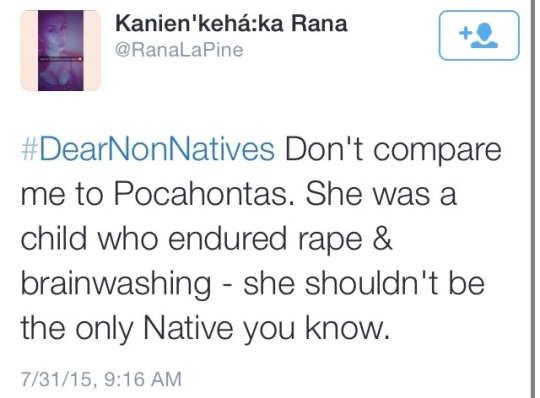
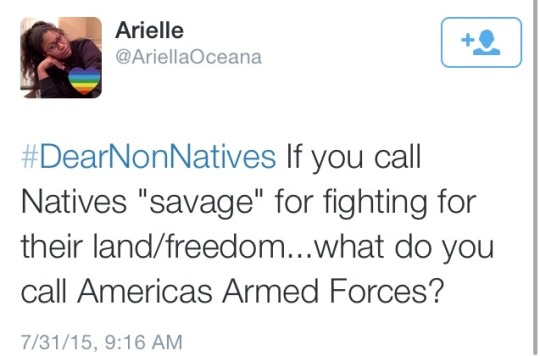

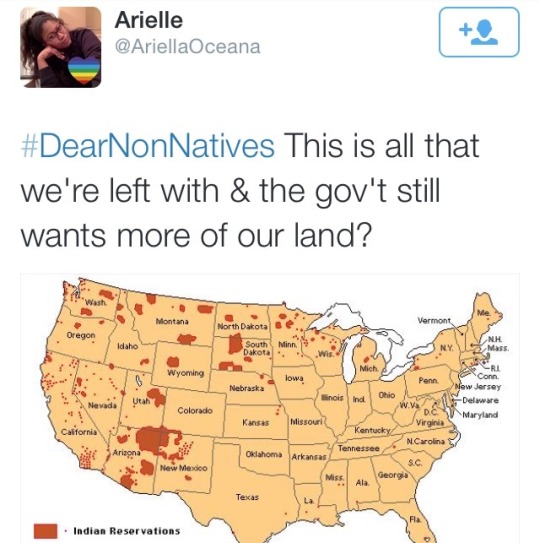
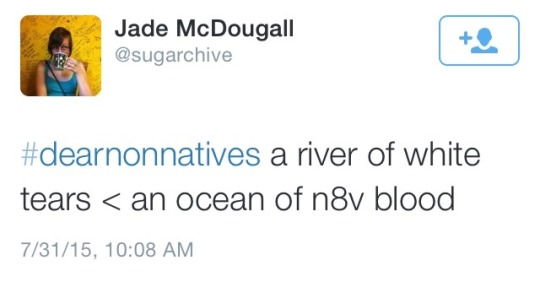
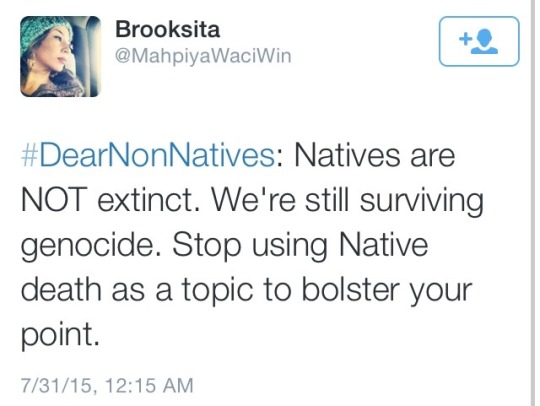


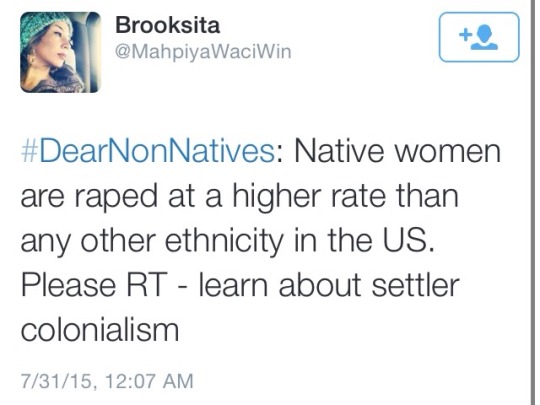
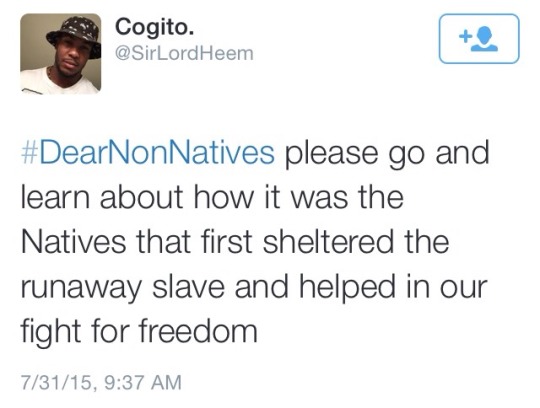
#DearNonNatives happened yesterday. Signal boost this and support! This hashtag needs more traction.
306K notes
·
View notes
Text
Intersectionality
is the undercurrent theme of this blog. Perhaps this is a new concept. If so, here are some things to get started:
Kimberlé Crenshaw (who coined the term in 1989) on intersectionality: “I wanted to come up with an everyday metaphor that anyone could use.” (source)
“Intersectionality promotes an understanding of human beings as shaped by the interaction of different social locations (e.g., ‘race’/ethnicity, Indigeneity,gender, class, sexuality, geography, age, disability/ability, migration status, religion). These interactions occur within a context of connected systems and structures of power (e.g., laws, policies, state governments and other political and economic unions, religious institutions, media). Through such processes, interdependent forms of privilege and oppression shaped by colonialism, imperialism, racism, homophobia, ableism and patriarchy are created.
PUT SIMPLY: According to an intersectionality perspective, inequities are never the result of single, distinct factors. Rather, they are the outcome of intersections of different social locations, power relations and experiences.” (source)
Read more things! There are a lot. Here are just a few:
1: Kimberlé Crenshaw on intersectionality in NewStatesman 2: USCB Center For New Racial Studies 3. Interview with bell hooks in Common Struggle 4. Lecture by bell hooks at the New College of Florida 5. The Institute for Intersectionality Research and Policy
3K notes
·
View notes
Photo

R Movement is against this form of dehumanisation of a race of people. Profitising off the display of black people in humanzoos which was exercised during the 19th/20th century is outright disrespectful and does nothing to question cultural otherness but rather perpetuates it.
Here is the link to sign the petition- https://www.change.org/p/withdraw-the-racist-exhibition-exhibition-b-the-human-zoo
This petition will be submitted to the Barbican where the event will be held, on the 13th September 2014
The white South African artist, Brett Bailey’s ‘EXHIBIT B’ is scheduled to take place on the 23rd September 2014
2 notes
·
View notes
Photo

a picture of our care packages to hit birmingham streets
1 note
·
View note
Photo

R Movement Birmingham created and distributed 'care packages' to the homeless. These are very easy and cost effective to make. Our care packages include condoms, period pads, cotton buds, a packet of tissues, toothbrush, plasters, soap, comb, hair bobble and snacks. We've decided that this will be part of our R Movement action plan, where we distrubute necessities to those without shelter and those who simply cannot afford these basic items which many people within the UK enjoy. Please do get involved and implement this idea in your local areas!
10 notes
·
View notes
Photo

Check out the leaflet for our launch event on the 19th of July 2014 at Soas (School Of Oriental And African Studies).
We will be looking at our aims and action plan, and will have food and an open mic.
Everyone is Welcome!
70 notes
·
View notes
Text
Our general 6 Month Action Plan
1) To protect the rights of people being affected by poverty and the cuts that have been made by the state by engaging, interacting and attempting to tackle issues they face.
2) Tackling police harassment by educating people about their rights when it comes to dealing with the police and by having an active presence in the streets, as well as putting information out online.
3) To create inclusive spaces for discussion.
4) To touch on issues that impoverished and oppressed people face in England/globally, by spreading information online as well as by speaking to people face to face.
5) To create spaces where people have the freedom to express themselves creatively thorough Poetry, Music, Art, Drama and any other creative outlet that people relate to.
6) To create a Street University which will by doing workshops in public spaces, create collective educational experiences and reclaim public space.
31 notes
·
View notes
